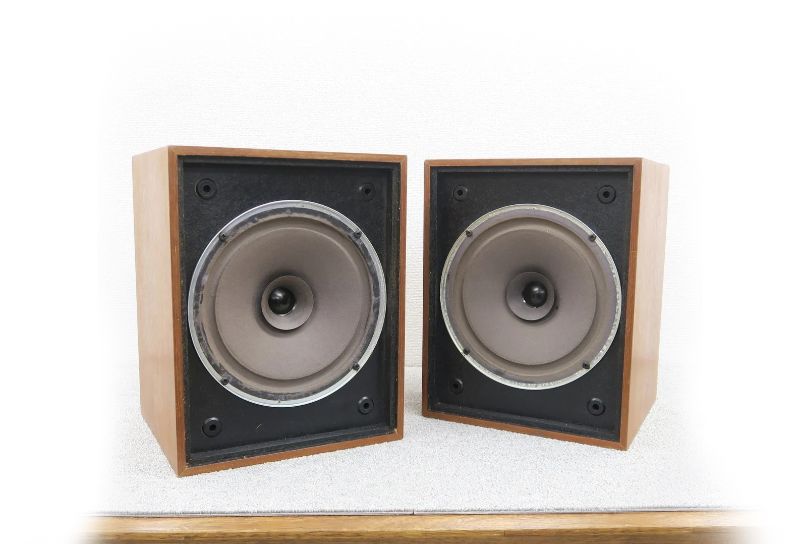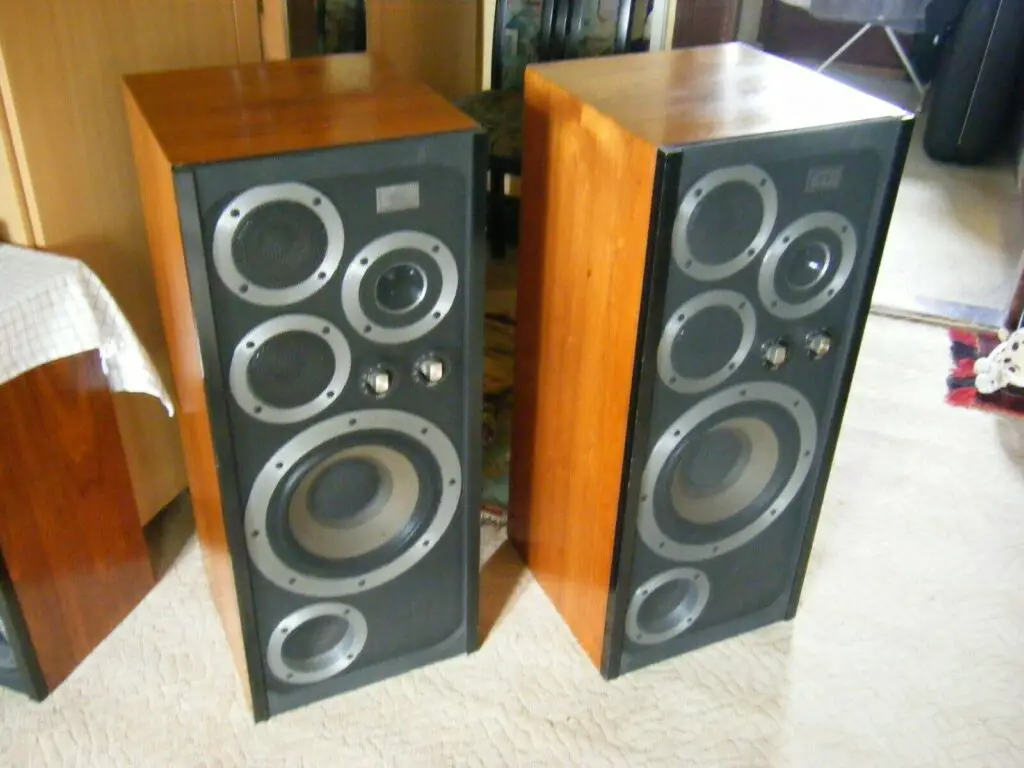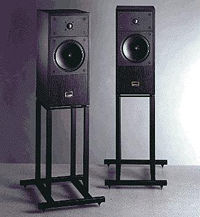“To be the first commercial endeavor to design and construct a loudspeaker that reflects the greatest standards attainable without respect to any of the so-called ‘practical factors’ that ultimately compromise traditional designs,” the brief stated. The design team was given “no constraints,” according to B&W, other from the need to recreate full range sound with very minimal distortion. When the new 801 was introduced in 1979, the widespread view was that it had achieved its goals, as the speaker was quickly accepted as the classical monitor at Abbey Road Studios. It was also utilized by Deutsche Grammophon and was installed in all Decca recording facilities.
That massive enclosure housed a 270mm thermoplastic coned woofer with 50mm voice coil and 4.5kg ceramic magnet in the earliest ‘Series 80’ models. A 100mm Kevlar (aromatic polyamide fiber) matrix cone with a 25mm voice coil and a smaller ceramic magnet was used. The 26mm polyester weave tweeter then took over, powered by a high-energy nickel cobalt center pole magnet with a reported total moving mass of 0.3g. The fourth order crossover network, which included a special APOC overload safety circuit to prevent heat damage to the drivers, was touted as one of the most advanced in any loudspeaker at the time. The voltages applied to each of the drivers were monitored, and if they exceeded the acceptable operating level of 32V, a ‘fail safe’ cut power to the speaker and illuminated an LED, which could be reset by pressing a button on the front baffle.
Its enclosure design was revolutionary at the time, effectively separating the cabinet’s bass driver from the midband and tweeter, which were housed in a separate ‘head assembly.’ By using a rubber decoupler between the upper and lower portions, B&W engineers were able to eliminate coloring travelling to the mid and treble components, as well as improve distortion and give perfect time alignment. Surprisingly, the upper component may be rotated independently of the bass unit if necessary. Surprisingly, the edges were ‘contoured’ to lessen diffraction effects, a technique that would take nearly a quarter-century to catch on. The 801 was and is enormous, sturdy, and built to last, which is why it is such a doyen of recording and broadcast facilities, and why it has become a legend in its own lifetime.
By today’s and yesterday’s standards, the requirements were somewhat unique. The frequency response of the 801 was reported to be 45Hz to 20kHz at -2dB, with a claimed sensitivity of 95dB/1w/1m and a nominal impedance of 8 ohms. On paper, the speaker could provide adequate sound levels with a modest amplifier, but in actuality, it required at least 50W RMS per channel, and a rather powerful one at that. The 801 didn’t change this rule. No three-way infinite baffle enclosure (tuned to 37Hz) with a sophisticated crossover is going to be easy to drive. Surprisingly, B&W claimed that the maximum input power had “no upper limit” because the electronic protection was meant to catch overloads before they could cause damage. In practise, the 801 could handle up to 250W RMS, which no other hi-fi speaker at the time could. Pair matching accuracy, according to the business, is often better than 0.25d8.
The speaker received its first major renovation in 1987; the external style remained nearly unchanged, with the exception of revised cabinet internals with unique bracing, earning it the moniker Matrix 801. The Matrix 800 series was adjusted using technology drawn from the 1993 statement Nautilus when the Nautilus 800 Series was released in 1998. The introduction of B&W’s new Diamond dome tweeter in 2005 gave the 801D its most recent, and perhaps one of the most worthwhile, improvements, giving it the designation 801D. It had a 380mm Rohacell coned woofer, a 150mm woven Kevlar midrange driver, and a 25mm diamond powder coated dome tweeter by this point.
Throughout its life, the 801 was heavily modified. The head assembly material was altered early on in the Series 80 run, and the tweeter was replaced to a polyester film type. A self-powered APOC was also introduced. In 1987, the Matrix 801 introduced reflex porting with an external bass alignment filter. From launch to the present, the two original crossover boards were consolidated into one, resulting in a decrease of over twenty passive components. Even the early 801s’ English rock wool filling was replaced with foam rubber. With the later models, the electrical circuit protection was removed, which is often thought to have improved the sound significantly.
The 801 is a moving feast in terms of sound; all versions have a large, forceful, visceral sound that makes practically all other speakers sound diffuse, vague, veiled, boxy, and uncommitted in comparison. It’s amazing how well it swats away most hi-fi designs. It’s a speaker who makes no apologies in any way. It all starts with its immense physical presence; there’s no alternative for ‘cubic inches,’ and the way it delivers bass has a staggering visceral thwack to it. But there’s more: the 801’s sound is perfectly balanced, allowing music to flow without sounding cerebral, restricted, or calculated. It has the same sound as a large PA speaker, but with a lot more subtlety and accuracy.
This speaker dives into a recording and recreates it on a scale that you won’t find in most home hi-fi systems, serving you a dizzying level of information. Some owners favor the earlier version’s infinite baffle cabinet, which appears to be a little tighter, tauter, and faster – but almost everyone thinks that the later 801D’s treble and midband are significantly superior, with a delicate airiness that the earlier high frequency components cannot match. You’ll never be able to completely ignore the Kevlar midrange driver because it has its own distinct tonal patina – but it’s not overpowering unless you’re a die-hard ribbon or electrostatic aficionado. Also certainly fits in with the overall aesthetic, and it aids the speaker in producing extremely high sound volumes with ease.
Although some speakers perform better in some areas, the B&W 801 has a solid argument to be the best all-around loudspeaker in the world. There are few designs that perform as well as this one does across the board. It makes music entertaining while still telling you what’s going on in forensic detail. It’s massively comprehensive and accurate across a large bandwidth yet never dull or emotionally unengaging. Each generation of this iconic series has its devotees, but any of them will be a wonderful secondhand purchase – provided, of course, that you have a spacious enough listening space and really kind neighbors







